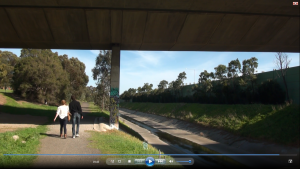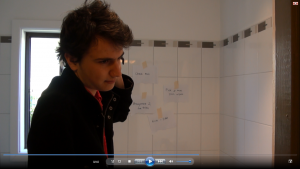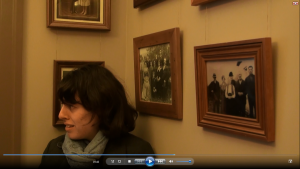As I mentioned in my last post, brief three was due last week and it was all about planning what we were going to do for project brief four, and seeing as I’m heading off to the Big Apple this week, I’ve already gotten started.
As I mentioned in my last post, in my research for project brief two (an essay in which I chose to discuss the similarities/differences between cinematic and visual art) I found that most cinema theorists seemed to think that film had inherited certain limitations from visual art. For example, the difficulty of being bound by a rectangular frame, or the need to use compositional techniques to create the impression of depth on a flat surface.
It seemed to me that these problems were all dependent on the idea of ‘the frame’; that rectangular, flat surface through which we see a film. But what if it didn’t have to be that way? What if a film was round, or curved?
Thus came about my idea for project brief four. I intend to create a multi-screen film, with the screens being exhibited at different depths and angles, to break down our existing conception of the frame. (For more detail on my approach, take a look at my project proposal which I have attached to this post as a pdf.)
So with that in mind and my first overseas trip looming very close (I’m actually writing this post ahead of time so by the time you read it I’ll be in New York City, baby!), I decided to get started on filming straight away. I managed to rope in my two good friends and excellent actors Xavier and Lucy and last Friday we filmed just about every shot of the film.
I have to say, it certainly made it a lot harder filming for a multi-screen project. I had two cameras, so for most scenes that required multiple shots I was able to film them simultaneously, saving time and ensuring that the continuity between shots would be consistent. However, it was difficult to get out of the mindset of typical film storytelling; I kept forgetting that I was not filming a shot-reverse-shot sequence and that I would therefore have no cover for issues (if an actor forgot a line, I could not rely on cutting away to a reaction shot as both the actor and the reaction shot would be on screen).
(Bear in mind when you’re looking at these that they will be displayed at different depths so the effect will be a little clearer).
Despite the difficulties, I thought overall it was a pretty successful shoot and I’m looking forward to getting into the edit suite and seeing it all come together.


